Temperature illuminance affects tomato quality
It is undoubted that the growth of plants is affected by the environment. Temperature, illuminance, etc. are all part of the environmental factors. Changes in these factors affect the growth of the plant at any time. In this paper, we mainly discuss the effects of temperature and light intensity on tomato quality. Among them, the change of temperature illuminance is monitored by a temperature illuminance recorder or also called a temperature illuminance recorder. The temperature illuminance recorder is one of the most frequently used instruments in a recorder and becomes an indispensable measurement in meteorological testing.
Through the identification of tomato quality, and the changes in temperature and light intensity, we found that the net photosynthetic rate and intercellular CO2 concentration of tomato leaves decreased with the prolonged temperature stress. The results of this experiment showed that under the same light intensity, the net photosynthetic rate of tomato leaves increased with the increase of temperature; at 30°C, the photosynthesis of tomato plants was the strongest; after 30°C, the net photosynthetic rate of tomato leaves gradually decreased with the increase of temperature, indicating that At temperatures above 30°C, photosynthesis of tomato plants was inhibited, plant growth rate was slowed, and Pn, Gs and Tr of tomato leaves were decreased. However, the net photosynthetic rate of tomato leaves at 25-35°C changed little, indicating that the temperature exceeding the optimum temperature of tomato would inhibit the photosynthesis of tomato. Lack of light will inevitably affect the photosynthesis of plants, resulting in a decrease in the net photosynthetic rate. At the same temperature, the net photosynthetic rate of tomato leaves increased with the increase of light intensity. The increase of stomatal opening under non-filling light conditions is beneficial to increase CO2 supply and increase Ci.
With the increase of temperature, the chlorophyll content increased during the flowering period of the tomato. Under the same temperature conditions, the light intensity increased, the chlorophyll content (Chla and Chlb) decreased, and the chlorophyll a/b value increased. This is consistent with the results of other plant studies. The adaptive reflection of the increase in the light intensity in the greenhouse. Decreased chlorophyll content is conducive to the plant's conversion of light energy into growing matter; as the temperature increases, the plants will age earlier, the leaves will become thinner, and the photosynthesis will be weakened. That is, the plant's light energy utilization rate will be low and the chlorophyll content will increase. Under the condition of supplemental light intensity, the Vc and soluble sugar content of tomato fruit increased, and the content of organic acid decreased. On the contrary, the ratio of sugar to acid increased. The natural temperature treatment area of ​​fruit sugar acid increased temperature treatment area, this may be due to a certain temperature difference between day and night is conducive to the development of tomato fruit and sugar accumulation, and warming treatment plant aging ahead of time, decreased photosynthesis, nutritional supply. The higher the temperature, the lower the ratio of sugar to acid, which is due to the increase of organic acid content.
Thus, temperature and light intensity have a certain influence on the quality of tomato. In addition, among environmental factors, there are relatively few mentions, but the influences are also not negligible. There are corresponding instruments such as wind anemometer. These instruments provide guarantees for the development of agriculture and allow agriculture to develop in a more efficient and environmentally friendly manner.
Wedge wire screen filer elements are made of stainless steel wedge wire screen. Filter rating is from 30 to 80 microns. Wedge wire screen is welded onto rods with stainless steel wedge wire at every contact point. They are classified into filer sheet, filter basket and filter elements. They have such characteristics as good strength, high ridity, resistance to abrasion and corosion, even gap, good in filtration and fluidity, easy to clean and back wash.
Application Wedge wire screen filter elements are used in sieving of petroleum, chemical industy, pharmaceutics, food and beverage, metalurgy and coal, also can be used in fitration of water treatment.
Wedge wire is a welded steel structure, mainly used for filtration, separation and retention media.
It consists of surface profiles, usually V-shaped, that are resistance welded onto support profiles. The distance between the surface profiles is controlled very accurately, as it forms the slot through which the filtrate flows.
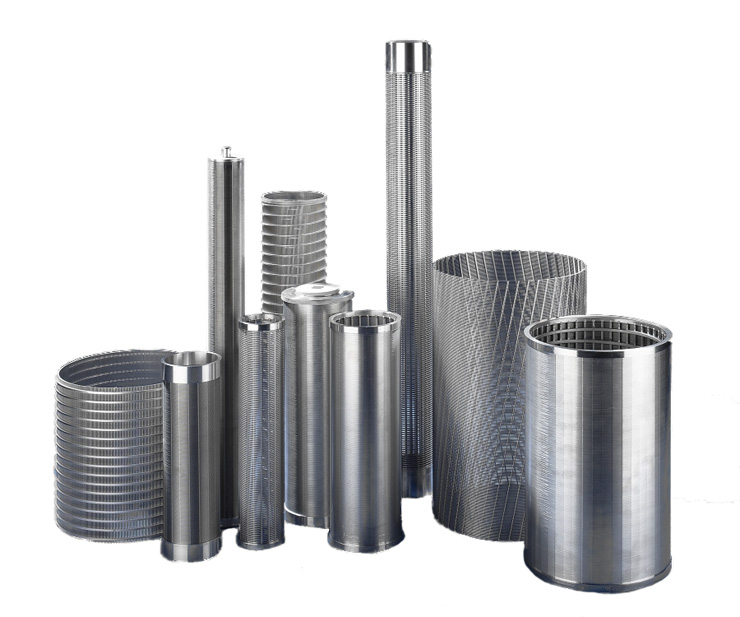
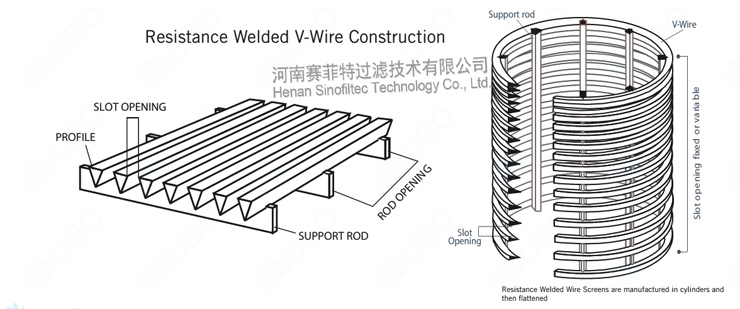
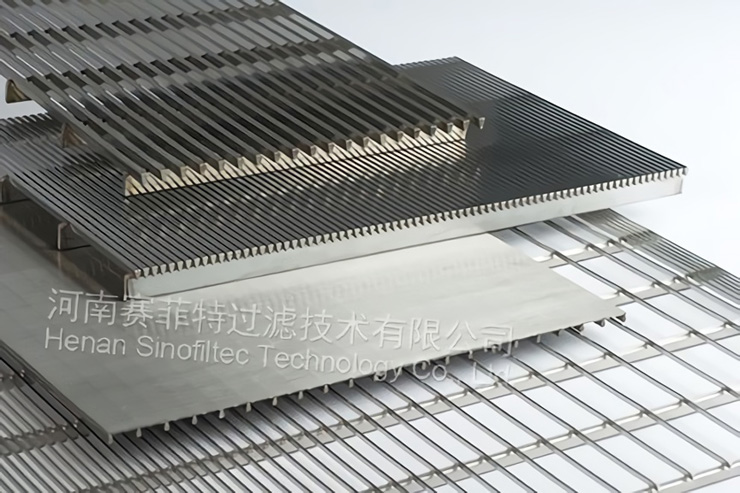
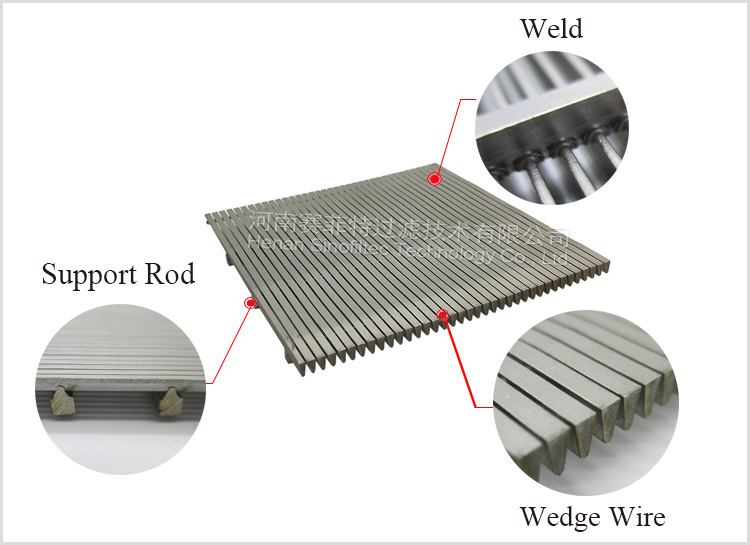
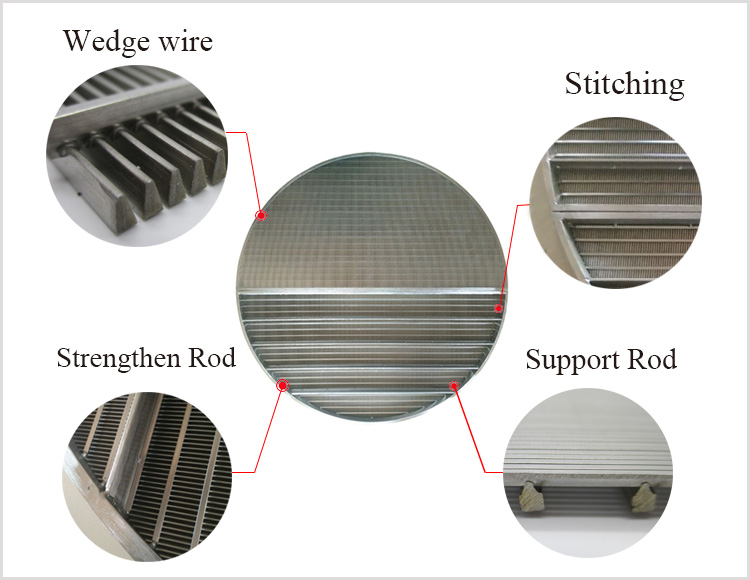
Wedge Wire Screen Filters
Stainless Steel Filter Cartridge,Wedge Screen Filter Cartridges,Wedge Wire Screen Filters
Henan Sinofiltec Technology Co.,Ltd , http://www.sinofiltec.com




